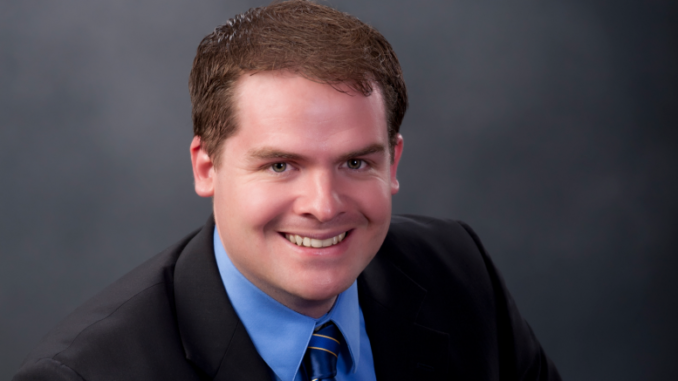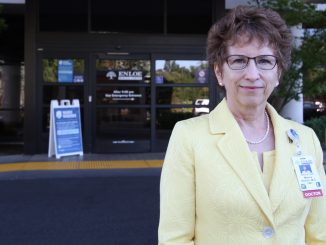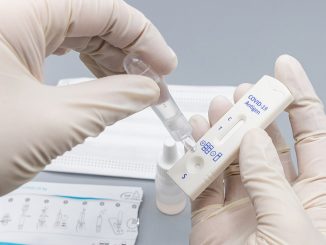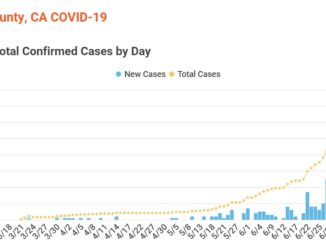
With his new app, Disaster Hawk, Sacramento-based disaster preparedness expert Patrick Hardy aims to make disaster planning less confounding for families, small businesses and just about anybody. As COVID-19 numbers continue to rise, Hardy provides advice for preparing for ongoing stay-at-home orders and a potentially worse second wave.
You are a disaster preparedness expert by profession. Tell me a little bit about that.
I’ve been a disaster preparedness expert for 15 years. I started my career in [emergency medical services], I worked in an ambulance and I later became a paramedic instructor. And then I worked for the governor’s office in Louisiana. I moved to Louisiana around Hurricane Katrina. … I worked the BP oil spill. … And FEMA selected me in 2012 to represent all of U.S. small business, all business, actually, to the Federal Emergency Management Agency. [At 31], I was the youngest person ever selected to that post. So I spent a three-month rotation in Washington.
And your experience with natural disasters puts you in a good position to advise families on how to prepare for another COVID spike?
I’d like to think so, yes. I advise families all the time. We have a mobile app, Disaster Hawk, so we teach families how to prepare for COVID [and other natural disasters] … It’s an app that allows people to create custom disaster plans—you literally could make the plans in 90 seconds. Prior to us, using FEMA’s website, [could] take you hours—hours, hours, to create a plan … and I said, “You know what? Let’s make this thing easy to use. Let’s make it fast. Let’s give them the kind of plan that they want.”
[The app is] COVID-focused now. We have a COVID plan for people that speak Spanish; we have a COVID plan for people who speak French; we have one for Vietnamese. I speak Mandarin Chinese—we have one coming [soon] in Chinese. So we have lots of different kinds of things that allow people to use the app.
The fight with COVID is ongoing. What’s the best thing families can do to prepare if they haven’t already?
Every family should right now, sit down and have a quick meeting with the family and say, “What did we learn from the first wave?”
So what kind of things should we cover, things like what kind of supplies did we realistically need? What information could we have really used that we didn’t have before? And psychologically, what kind of support did we need to have? Do we need to be stronger with hobbies? How are we going to deal with long-term quarantine isolation procedures? You don’t want to repeat the same mistakes.
Mistakes like hoarding toilet paper?
People reacted reflexively. I used to live in the Gulf Coast area, so just before hurricanes, if you went to the grocery store just before, it was empty. All the shelves were empty. It was very reflective of things I’d seen before. So what I tell people is, look, the way to prepare for it is, you don’t need a 30-, 60-, 90-day supply. You just need 10 to 14 days. The supply chains have recovered now, and they’ve matched the resurgence, so if you have extra now, great!
So what do we really need to have on hand?
The first thing that they should have on hand is make sure you have enough water. … One thing that people forget is that one disaster can tie into multiple disasters. Just because we’re going through COVID doesn’t mean that earthquakes are going to stop, that doesn’t mean wildfires are going to stop. You should always have [water] on hand.
The other thing they should have is enough food for 10 to 14 days. If I were to put a bubble over your house and say, “You can’t leave,” you should have enough food for yourself and for your family for 10 to 14 days.
Why are 10 to 14 days the magic numbers?
If people had done that the first time around, supply chains would have recovered faster. I’ve been through massive disasters. I’ve been through [Hurricane] Sandy, I’ve been through Katrina, all these disasters. Every single one of them: How long can you stay in your house? [Prepare to] stay in your house for 10 to 14 days, at least.
Any final tips?
We’re ordering things online these days, having it shipped to our house. Sometimes you’ll have an order and you need to have an item, and you say, “I’ve gotta have that, I’ve gotta order that today or I’m in real trouble.” But then you realize, you really want free shipping and just don’t have enough to make it free. You know what? Take out the Ready.gov [disaster preparedness kit] brochure and tack on two or three things on that list. If you do that you can incrementally add things. … You’ll get all the emergency supplies that you need on your list.




Be the first to comment